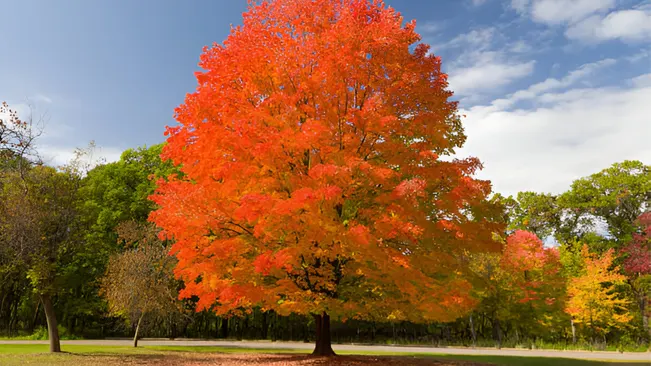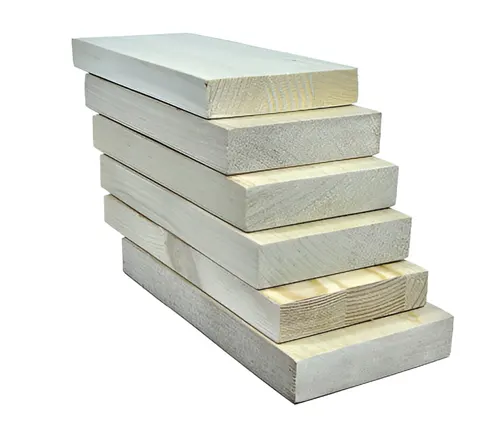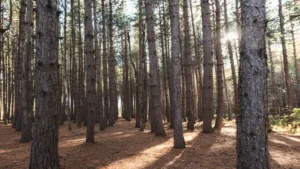Hard Maple Pricing and Quality
- September 4, 2024
- 0 comment
Hard Maple (Acer saccharum), often referred to as Sugar Maple, is a premium hardwood species highly valued for its durability, versatility, and aesthetic appeal. From furniture and flooring to cabinetry, Hard Maple is a top choice for various high-end products.

However, the pricing and quality of Hard Maple fluctuate yearly due to various market dynamics, quality factors, and external influences. This article provides a comprehensive analysis of Hard Maple pricing and quality from 2020 to 2023, offering insights into what affects this sought-after hardwood.
What Influences Hard Maple Pricing?
Several key factors directly influence Hard Maple pricing, from the quality of the wood to market demand and supply chain dynamics. Understanding these factors is crucial for stakeholders, including buyers, sellers, and manufacturers, as it allows them to make informed decisions about when to buy or sell and how to maximize value.
Quality Considerations
The quality of Hard Maple significantly impacts its market value. Quality is assessed based on several factors, including grain pattern, color consistency, and the presence of defects.
Uniform grain and consistent color are particularly desirable in high-end applications like furniture and cabinetry. Defects such as knots, splits, or color variations reduce the grade of the lumber and, subsequently, its price.

Market Demand
Market demand is another crucial factor that influences Hard Maple pricing. High demand from industries such as furniture, flooring, and cabinetry typically drives up prices, particularly for higher grades of wood. Consumer preferences also play a role; for example, a trend toward lighter wood tones can increase demand for Hard Maple with consistent, light colors.
Supply Chain Dynamics
The dynamics of the supply chain, including logging practices, market access, and international trade, significantly affect Hard Maple pricing. Disruptions in the supply chain, whether due to environmental regulations, logging restrictions, or logistical challenges, can lead to price fluctuations.
Additionally, the role of international trade cannot be overlooked, as global demand for Hard Maple influences domestic pricing.
Yearly Analysis of Hard Maple Pricing and Quality (2020-2023)
Understanding the yearly trends in Hard Maple pricing and quality provides valuable context for current and future market conditions. The following table summarizes the pricing trends and key factors influencing the market from 2020 to 2023.
| Year | Average Price per Board Foot | Primary Factors Affecting Pricing | Quality Trends |
|---|---|---|---|
| 2020 | $3.50 – $4.00 | Economic slowdown due to COVID-19, stable supply, moderate demand | Consistent quality due to controlled supply chain |
| 2021 | $4.00 – $4.50 | Post-pandemic recovery, increased demand in housing | Slight improvements in quality due to selective harvesting |
| 2022 | $4.50 – $5.00 | Supply chain issues, high demand, inflation | Variability due to increased logging pressure |
| 2023 | $4.75 – $5.25 | Market stabilization, improved supply management | Higher consistency in quality as supply chain stabilizes |
Detailed Quality Assessment of Hard Maple
Quality is a paramount consideration in the valuation of Hard Maple. High-quality wood, characterized by uniform grain, light color, and minimal defects, commands premium prices. Below is an overview of the key quality factors and their impact on pricing.
| Quality Factor | Impact on Price | Description |
|---|---|---|
| Grain Pattern | Higher demand for uniform grain | Uniform, fine grain fetches premium prices |
| Color Consistency | Light, consistent color is valued | More desirable for high-end products like flooring |
| Defects (Knots, etc.) | Reduces overall grade and market value | Higher-grade lumber has minimal to no defects |
| Density | Denser wood often commands better pricing | Hard Maple is known for its density and durability |
Grain pattern and color consistency are vital for high-end industries like furniture and flooring. Lumber with uniform grain and consistent color is highly valued, while wood with defects is often used for lower-grade applications like construction.
Regional Pricing Variations
The pricing of Hard Maple can vary significantly by region due to differences in market access, logging practices, and regional demand. The following table provides an overview of how prices fluctuate across different regions in North America.
| Region | Average Price per Board Foot | Market Factors |
|---|---|---|
| Northeast U.S. | $4.00 – $4.75 | Proximity to key markets and historical supply |
| Midwest U.S. | $4.25 – $5.00 | High production but varying quality |
| Canada | $4.00 – $5.25 | Strong export market and high-quality lumber |
Prices in the Northeast U.S. are higher due to market proximity and maple production history. In contrast, Midwest prices are slightly lower due to variable quality and larger volumes, while in Canada, international demand drives high-quality lumber prices.
Annual Price Comparison by Grade
Pricing for Hard Maple also varies by grade, with higher grades such as Select commanding significantly higher prices than lower grades like No. 2 Common. The following table illustrates the price differences across grades from 2020 to 2023.
| Year | Select Grade | No. 1 Common | No. 2 Common |
|---|---|---|---|
| 2020 | $5.00 – $5.50 | $4.00 – $4.50 | $3.00 – $3.50 |
| 2021 | $5.25 – $5.75 | $4.25 – $4.75 | $3.25 – $3.75 |
| 2022 | $5.50 – $6.00 | $4.50 – $5.00 | $3.50 – $4.00 |
| 2023 | $5.75 – $6.25 | $4.75 – $5.25 | $3.75 – $4.25 |
Higher grades like Select and No. 1 Common are preferred for applications requiring uniform appearance and minimal defects. In contrast, lower grades are more suitable for uses where aesthetic quality is less critical.
Impact of Market Demand on Pricing
Market demand for Hard Maple is influenced by several industries, with furniture, flooring, and cabinetry being the primary drivers. Each industry has specific requirements for wood quality, which in turn affects pricing.
| Industry Demand | Impact on Hard Maple Prices | Key Industries |
|---|---|---|
| Furniture | High, especially for select grade | Drives demand for high-quality Hard Maple |
| Flooring | Moderate | Consistent demand for durable and aesthetically pleasing wood |
| Cabinetry | High for custom projects | Prefers consistent grain and color for high-end projects |
The furniture industry’s demand for high-quality Hard Maple drives up prices for select grades, while the flooring industry maintains a steady demand for durable wood. Custom cabinetry also contributes to high demand, particularly for lumber with consistent grain and color.
Supply Chain and Export Market Dynamics
The supply chain for Hard Maple is complex, with factors such as logging practices, international demand, and export markets influencing pricing.
| Supply Chain Factor | Impact on Pricing | Notes |
|---|---|---|
| Logging Practices | Sustainable practices increase quality | Certification, regulated logging, and selective harvesting enhance long-term market value. |
| Export Demand | Drives domestic prices | Strong international demand, particularly from Europe and Asia, increases U.S. and Canada prices. |
| Transportation Costs | Increases overall pricing | Rising fuel costs and logistical challenges drive up the cost of delivering Hard Maple. |
| Labor Availability | Affects logging efficiency and costs | Labor shortages can lead to delays in production, impacting supply and price stability. |
| Environmental Regulations | Compliance raises costs | Strict environmental laws increase operational costs but ensure sustainable practices. |
| Technological Advancements | Potential for price reduction | Innovations in processing and transportation can improve efficiency and reduce costs. |
Sustainable logging practices not only improve the quality of Hard Maple but also enhance its market value. Moreover, strong international demand, particularly from Europe and Asia, has driven up domestic prices in recent years.
Future Outlook (2024 and Beyond)
As we look towards the future, several factors will likely influence Hard Maple pricing and quality.
Stabilization of Prices: After the fluctuations caused by the pandemic and supply chain disruptions, prices are expected to stabilize, albeit at a higher level than pre-2020 levels.
Impact of Climate Change: Changes in climate could affect the availability and quality of Hard Maple, potentially leading to price increases.
Technological Advancements: Innovations in processing and grading could lead to more consistent quality and potentially influence pricing structures.
Conclusion
Hard Maple remains a highly valued hardwood, with pricing and quality heavily influenced by market demand, regional variations, and supply chain dynamics. By understanding these factors and keeping track of yearly trends, industry stakeholders can make informed decisions that optimize both profitability and quality.
Whether you’re a buyer, seller, or manufacturer, staying informed about Hard Maple’s market dynamics is essential for navigating this complex market. With the right knowledge and strategic planning, it’s possible to maximize the value of this premium hardwood.
Frequently Asked Questions (FAQ’s)
- What factors influence the pricing of Hard Maple?
Hard Maple pricing is influenced by factors such as market demand, quality of the wood, logging practices, and export market dynamics. Environmental regulations and transportation costs also play significant roles. - How does the quality of Hard Maple affect its price?
Higher-quality Hard Maple, which is characterized by fewer knots, a uniform grain, and fewer defects, commands a higher price due to its suitability for premium products like furniture and flooring. - What is the impact of export demand on Hard Maple pricing?
Strong international demand, particularly from Europe and Asia, has driven up domestic prices for Hard Maple. Export demand can significantly increase prices in the U.S. and Canada. - Are there environmental regulations that impact Hard Maple pricing?
Yes, compliance with environmental regulations can raise operational costs, which may be reflected in higher market prices for Hard Maple. Sustainable logging practices, though costlier, also boost long-term market value. - How have technological advancements affected Hard Maple pricing?
Technological advancements in logging and processing have the potential to reduce costs by improving efficiency. However, these benefits may take time to affect market pricing. - What role does transportation play in Hard Maple pricing?
Rising transportation costs, driven by factors such as fuel prices and logistics challenges, increase the overall cost of Hard Maple, which can lead to higher market prices. - How does labor availability impact the Hard Maple market?
Labor shortages in the forestry and logging industries can delay production and increase costs, contributing to higher prices for Hard Maple. - What are the key differences between Hard Maple and Soft Maple?
Hard Maple is denser, more durable, and generally more expensive than Soft Maple. It is preferred for high-end products, whereas Soft Maple is often used for less demanding applications. - How have Hard Maple prices changed from 2020 to 2023?
Hard Maple prices have increased due to factors such as post-pandemic recovery, strong export demand, supply chain issues, and inflation. Prices stabilized in 2023 but remained high due to ongoing demand and quality factors. - Why is certification important for Hard Maple logging practices?
Certification ensures that logging practices are sustainable and meet specific environmental standards. Certified Hard Maple is often more valuable because it guarantees responsible sourcing, appealing to eco-conscious markets.

James Wilson
Forestry AuthorJames Wilson has over 15 years of experience in forestry economics, specializing in sustainable practices, investment opportunities, and financial management. He has contributed to notable publications like "Forestry Today" and "EcoFinance Journal" and is known for providing practical and insightful advice. With a degree in Environmental Economics, James stays updated through continuous learning and active participation in industry discussions. Outside work, he enjoys hiking and nature photography, bringing a well-rounded perspective to his professional role.




Leave your comment